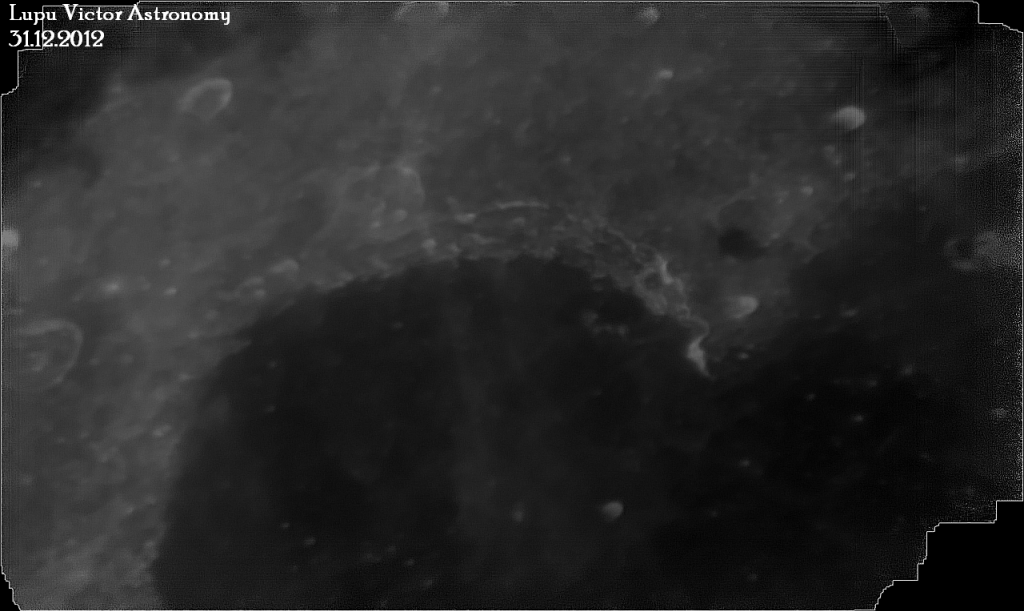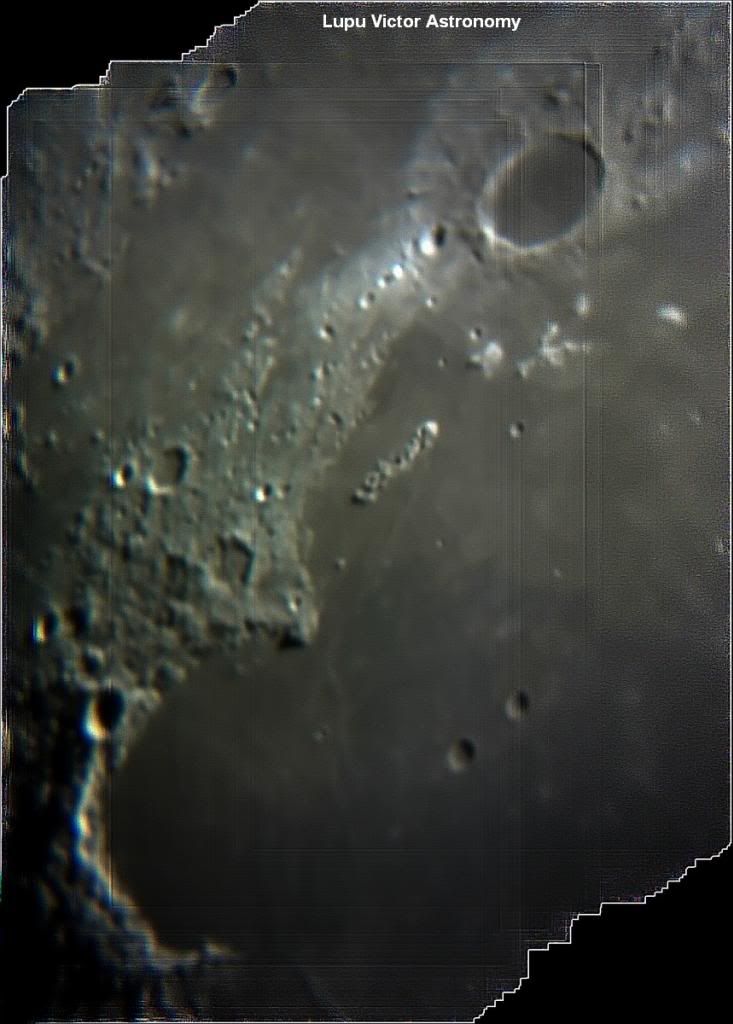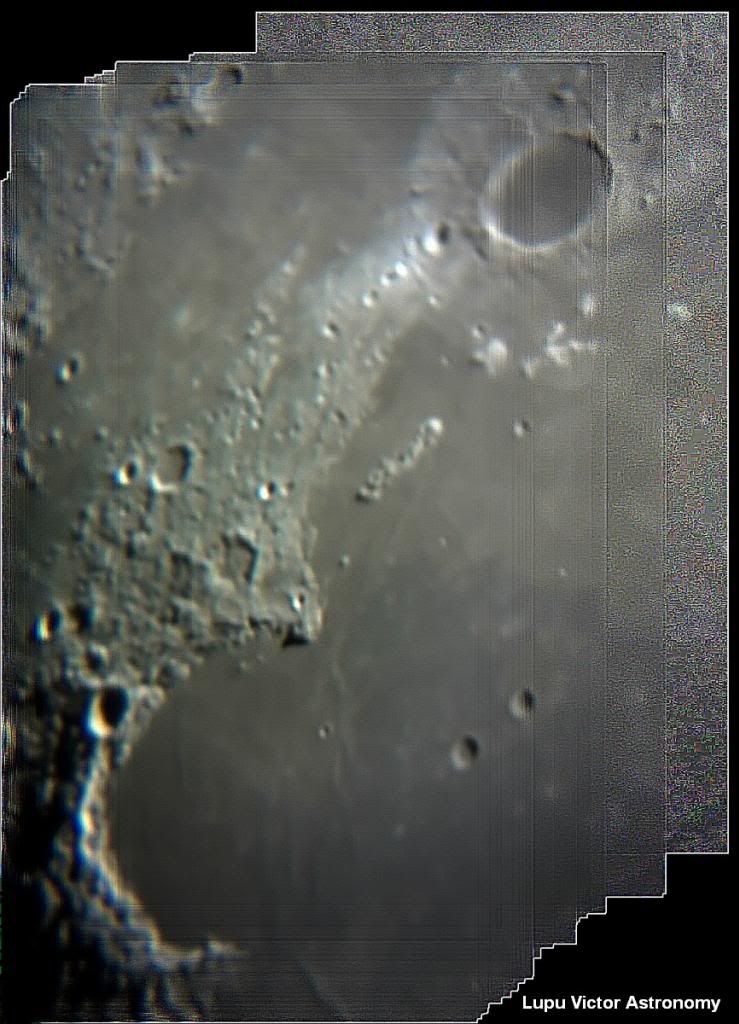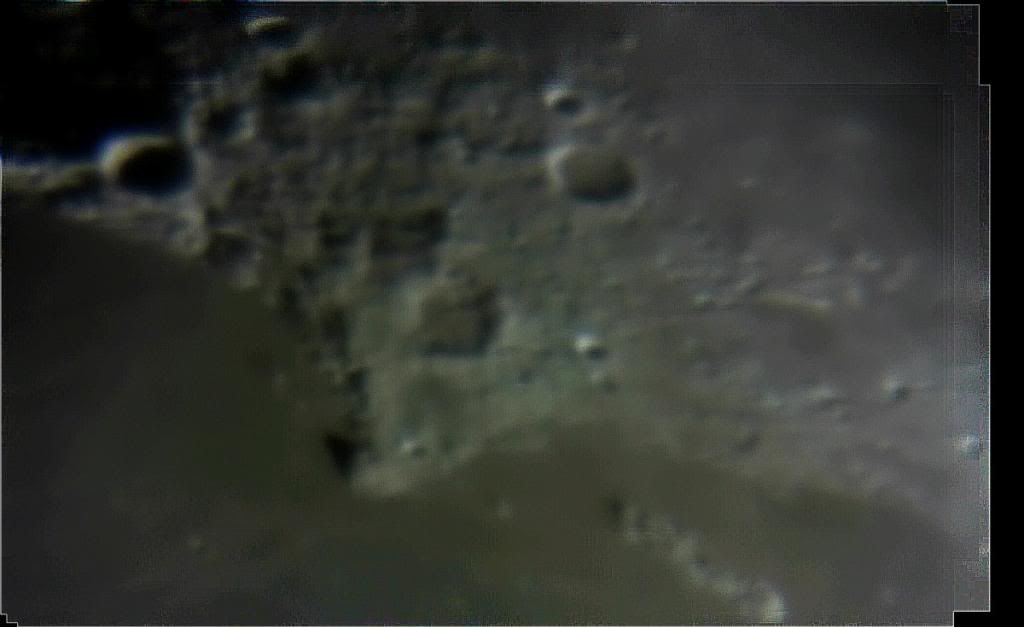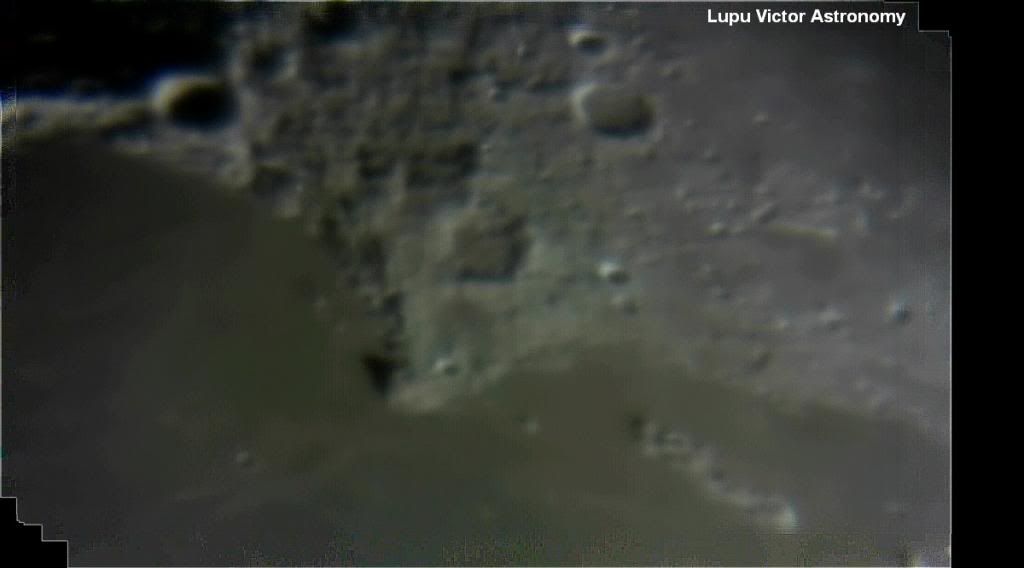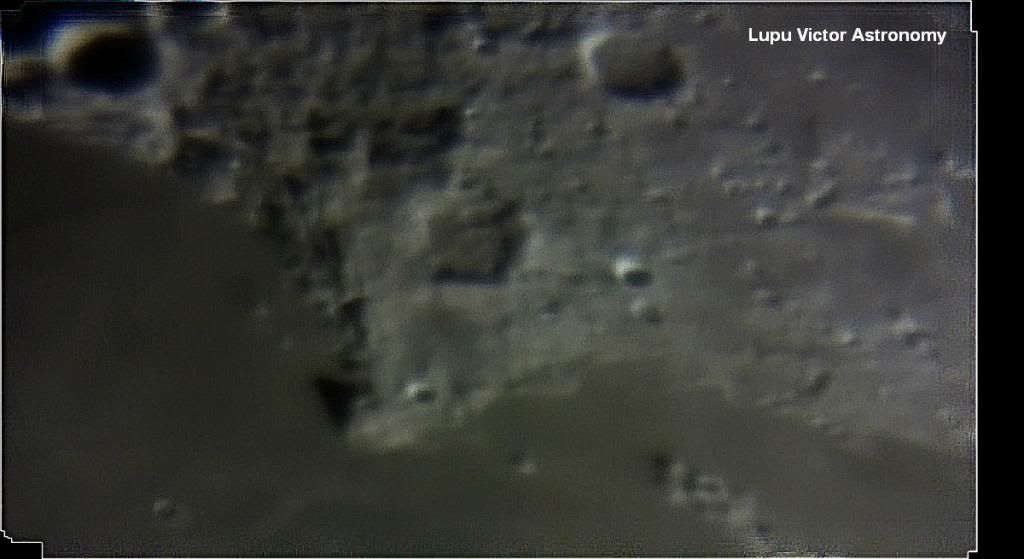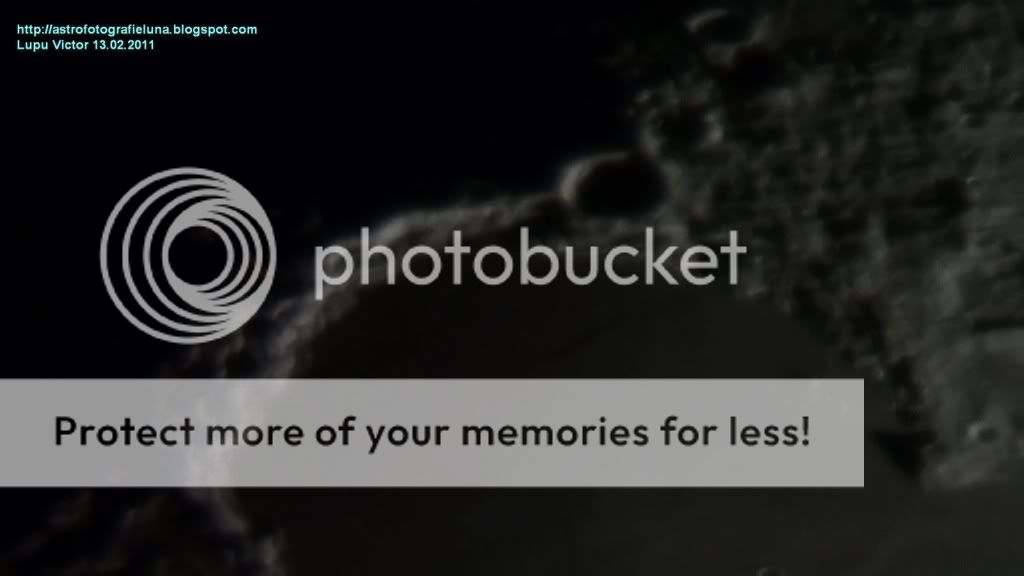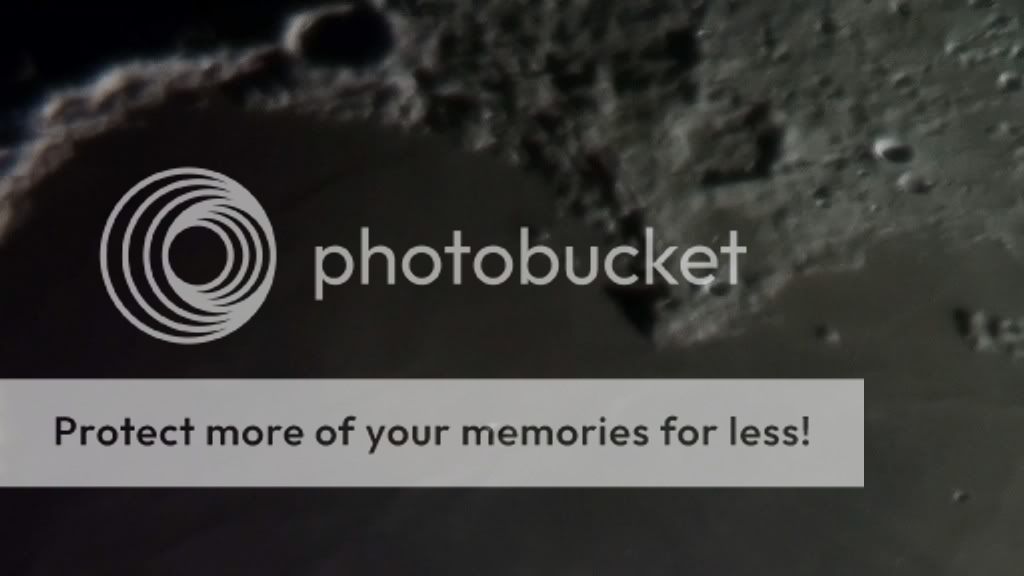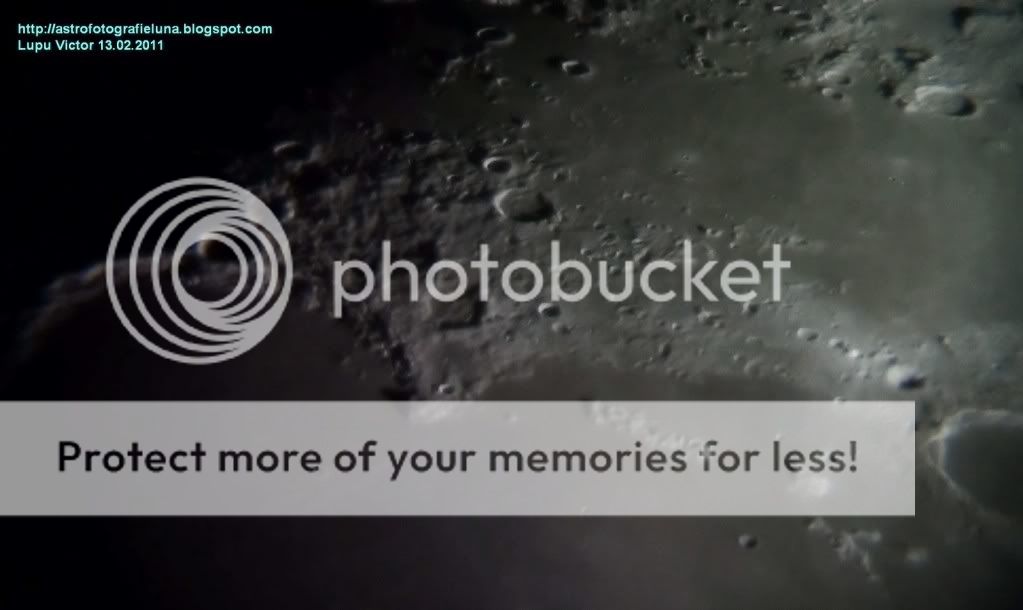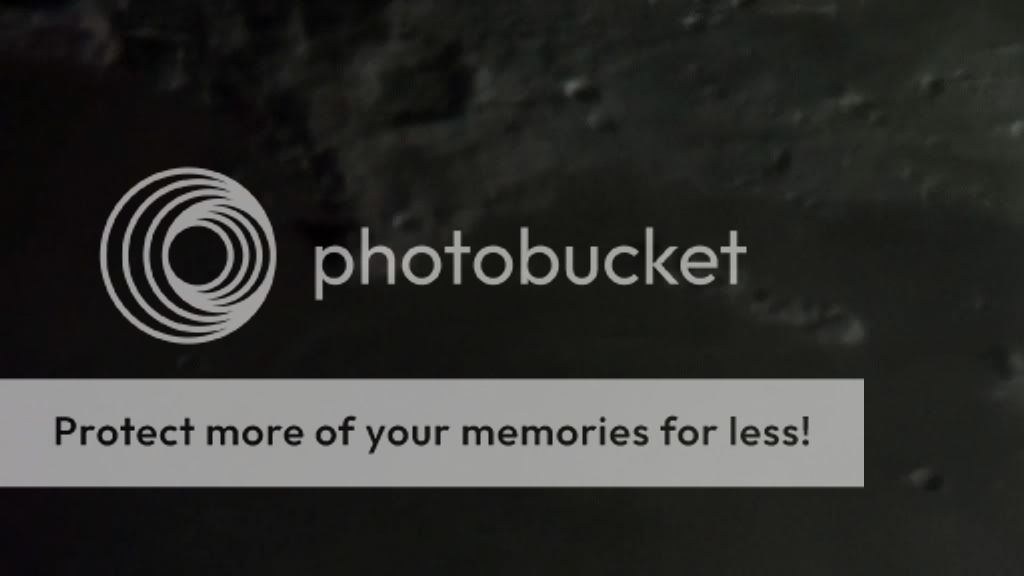It is not the first time we talk about "Gulf of rainbows" or Sinus Iridum. This great golf, Mare Imbrium basin full of lava, has 236 km. The wall forming the crescent-shaped bay is called Montes Jura.
Sinus Iridum is very popular among the "lunatics" because of its shape and because it is in stark contrast to Mare Imbrium, which is dark and the two features combined make the bay to stand out as it is observed even by a ordinary binoculars.
Sinus Iridum's name was given by Giovanni Riccioli.
Magnitude: -12.11
Phase: 0.96
Distance: 401.329 km
Illuminated: 96.2% (0% = New, 100% = Full)
Astronomical instrument: Celestron C8-Newtonian telescope,
Eyepiece: Plossl 20mm, 2x Barlow
Mount: CG5 (EQ5)
Apparatus: Sony CX130
Filter: no
Date: 08.11.2011
Location: Baia Mare, Romania
Processing: FastStone Image Viewer
In the pictures below are labeled craters and other lunar features in the region. To better understand this photo, you should note that the label with the name or the letter of larger craters could be found at their center, and on the small craters, you should find them around them, usually above.
Sinus Iridum is very popular among the "lunatics" because of its shape and because it is in stark contrast to Mare Imbrium, which is dark and the two features combined make the bay to stand out as it is observed even by a ordinary binoculars.
Sinus Iridum's name was given by Giovanni Riccioli.
Magnitude: -12.11
Phase: 0.96
Distance: 401.329 km
Illuminated: 96.2% (0% = New, 100% = Full)
Astronomical instrument: Celestron C8-Newtonian telescope,
Eyepiece: Plossl 20mm, 2x Barlow
Mount: CG5 (EQ5)
Apparatus: Sony CX130
Filter: no
Date: 08.11.2011
Location: Baia Mare, Romania
Processing: FastStone Image Viewer
In the pictures below are labeled craters and other lunar features in the region. To better understand this photo, you should note that the label with the name or the letter of larger craters could be found at their center, and on the small craters, you should find them around them, usually above.
 |
| Image from 3 march 2012. |








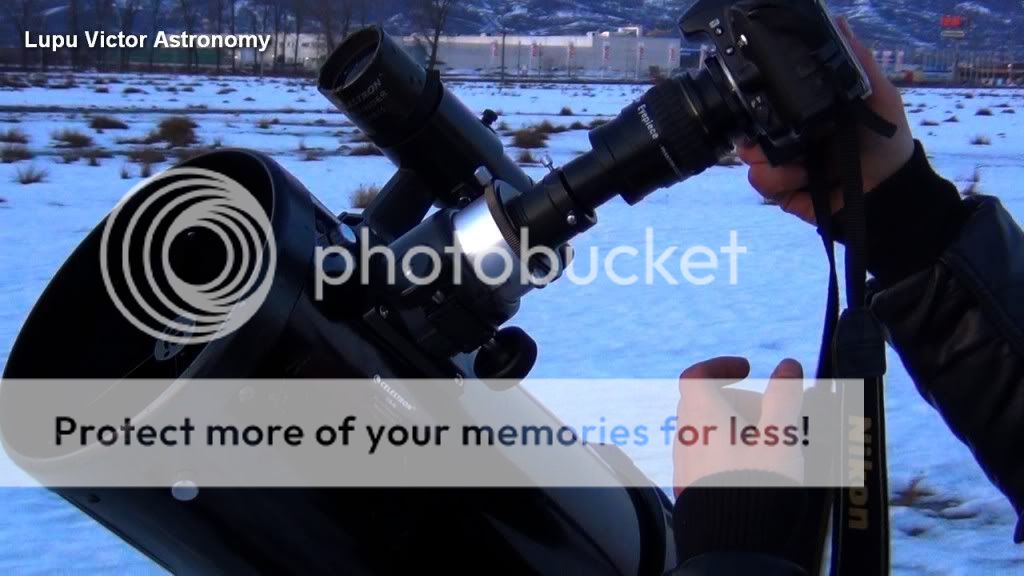

 Tuesday, February 16, 2016
Tuesday, February 16, 2016
 Unknown
Unknown





















